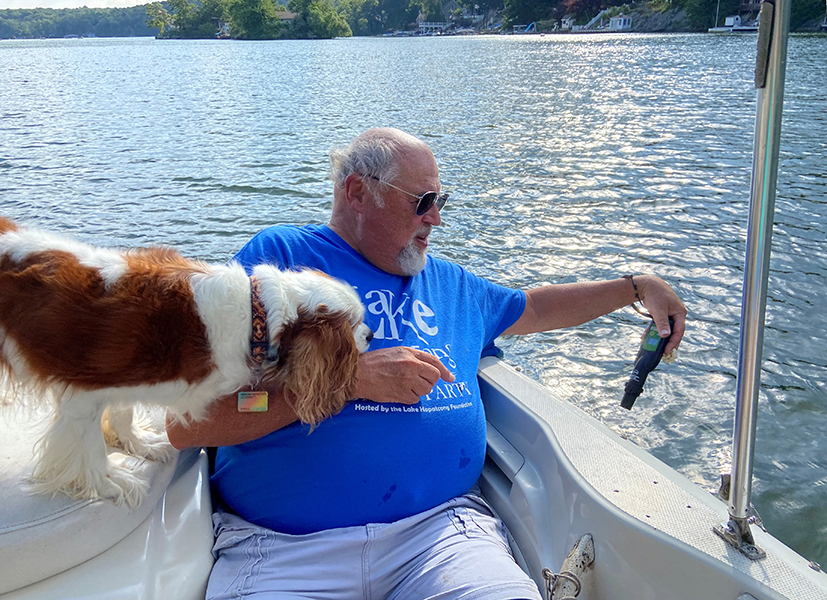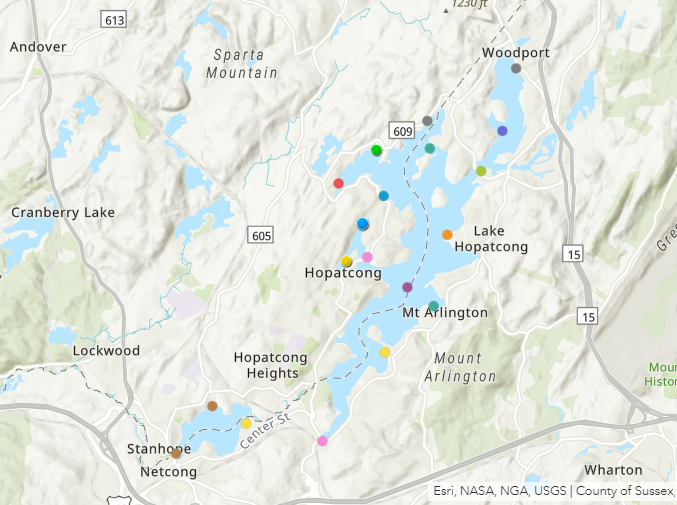
August 04, 2022| Environment, People
By: Donna Macalle-Holly
For the second year, the Lake Hopatcong Foundation is coordinating volunteer Harmful Algal Bloom (HAB) monitoring on Lake Hopatcong, as part of the Musconetcong Watershed Association's (MWA) HAB monitoring and reporting project in the Musconetcong River Watershed.
Volunteer HAB monitors were trained and provided a FluoroSense handheld fluorometer, thermometer, Secchi disk, and data recording sheet to complete their monitoring. Monitors submit their findings to the MWA, and if their readings are consistently above a designated threshold, they also report their findings, along with photos, to the New Jersey Department of Environmental Protection (NJDEP).
“We are fortunate to have three of our volunteers from last year return again to continue our HAB monitoring efforts,” said LHF Grant and Program Director Donna Macalle-Holly. “Our volunteers are monitoring 16 sites weekly this year on Lake Hopatcong, which includes the 15 sites monitored last year and one additional site in the southern section of Crescent Cove.”
NJDEP monitors for HABs in several ways. According to their HAB Monitoring FAQs, "Many of the suspected HABs that are investigated are from reports submitted by the public, however, there are DEP staff in the field doing routine monitoring on NJ’s lakes, rivers, and streams, as well as other partners (e.g. parks and local health depts) who may report suspected HABs. DEP also employs enhanced technology such as flight surveillance and continuous monitoring meters deployed at specific locations."
Lake Hopatcong has two continuous monitoring buoys currently deployed, one in River Styx and the second near Hopatcong State Park. The other two monitoring buoys in Byram Bay and Woodport, were vandalized, forcing NJDEP to remove those buoys from the lake.
According to HAB monitoring volunteer, Cliff Lundin, who monitors six sites from his boat (along with his canine buddy, Neville), “The weekly monitoring takes about 1.5 hours by boat and data reporting to the MWA, and when necessary, NJDEP, typically takes an additional 1.5 hours. It is important that the data be reported to provide a baseline data set and to monitor trends.”

Cliff sees his participation in the volunteer monitoring effort as a continuation of the work he began in 1973 as a member of the Lake Hopatcong Regional Planning Board, the predecessor organization to the Lake Hopatcong Commission, as well as the work completed for his Master’s thesis which resulted in a comprehensive water quality study on the lake and led to the initial lake restoration grants.


November 25, 2025
Advocacy, Community, Education, Environment, Events

November 24, 2025
Fundraising